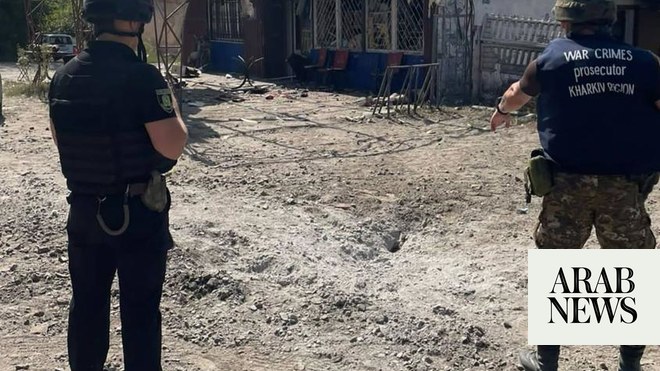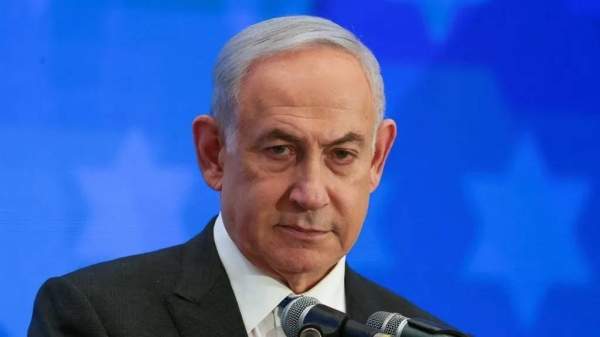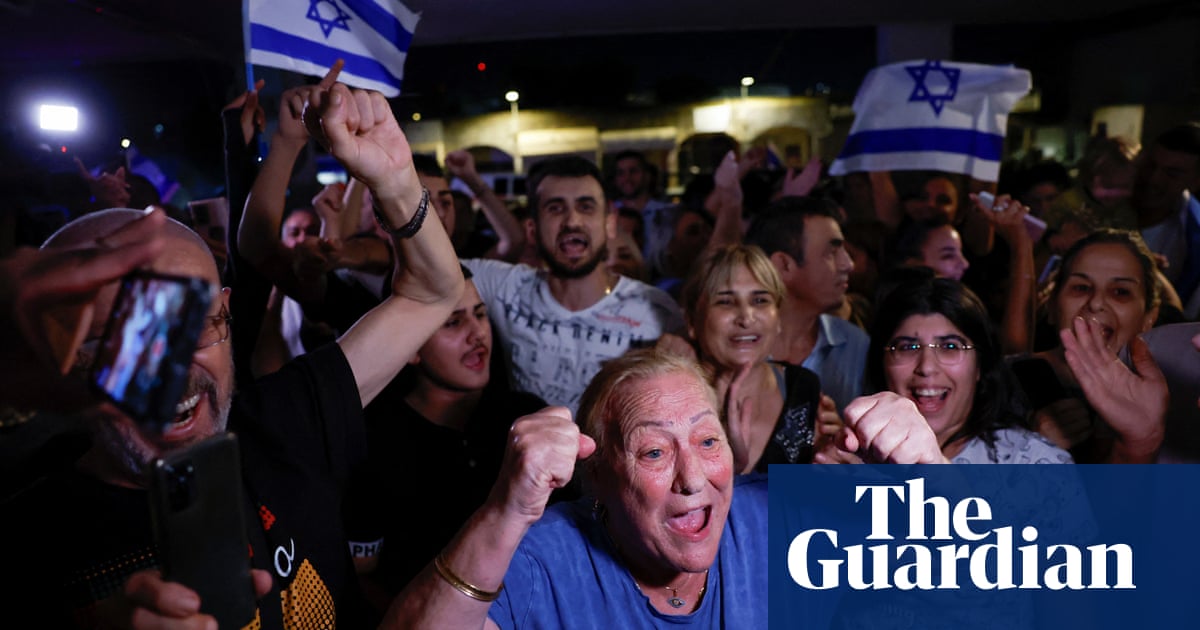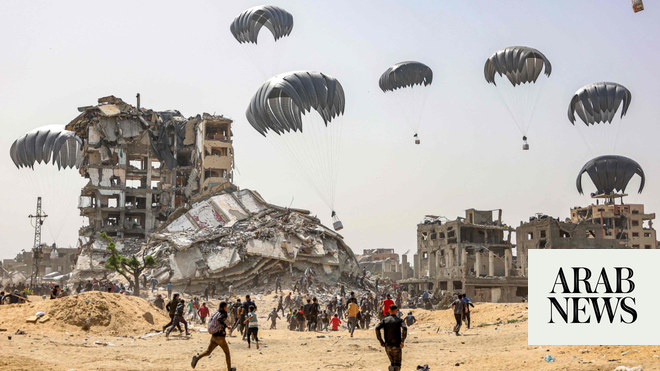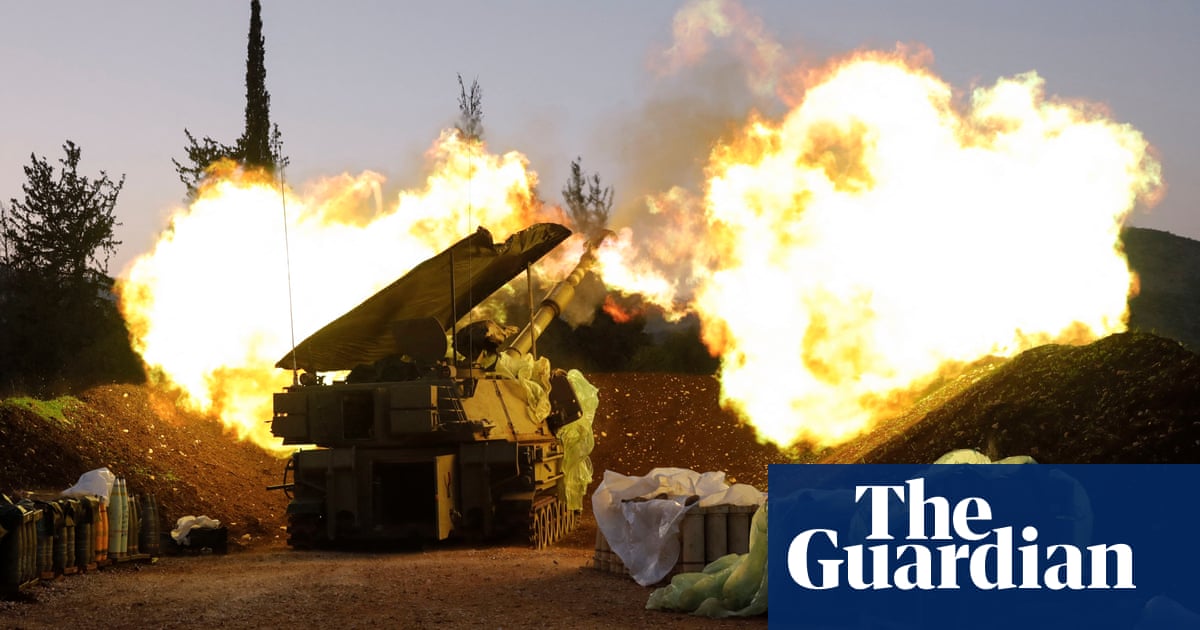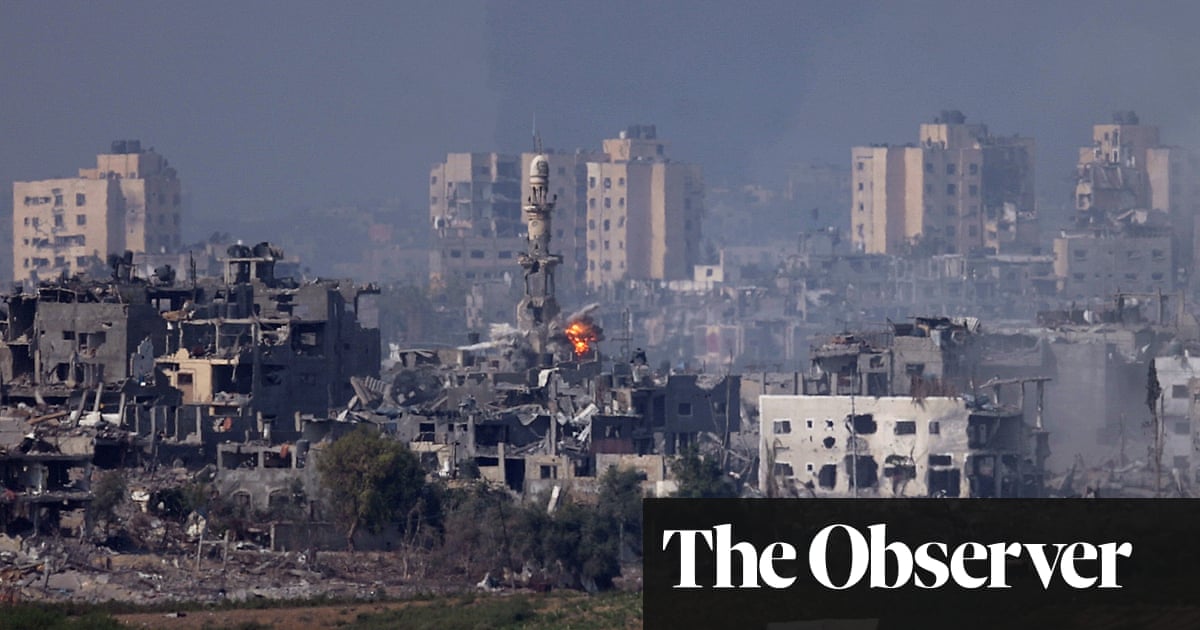
Gaza was plunged into darkness, isolation and violence on Saturday night, its communications with the outside world almost entirely cut, as Israel’s prime minister, Benjamin Netanyahu, announced his country was entering “the second stage” of what was likely to be a long and difficult war against Hamas.
In a televised press conference Netanyahu told Israelis: “We have unanimously approved the widening of the ground invasion … Our objective is singular: to defeat the murderous enemy. We declared ‘never again’, and we reiterate: ‘never again, now’.”
Describing the expanding war as Israel’s “second war of independence” Netanyahu continued: “In the initial weeks of the war, we launched massive airstrikes that dealt a severe blow to the enemy.
“We eliminated many terrorists. However, we are only at the beginning. The battle within the Gaza Strip will be difficult and long; this is our second war of independence.”
As 2.3 million Palestinians in the blockaded coastal strip braced themselves for a second night of sharply escalating Israeli military operations, Israel’s defence minister, Yoav Gallant, said that the campaign against the Islamist militant group Hamas would continue until a new order was given.
After the heaviest airstrikes of the war so far, which saw up to 100 Israeli jets pound scores of targets throughout Friday night, Israeli armour and infantry which had entered Gaza under cover of darkness remained fighting in the enclave .
Netanyahu’s comments came hard on the heels of those by Gallant and IDF chief of staff Herzi Halevi both signalling the war was entering a new phase. Halevi, head of the Israel Defence Forces (IDF), announced that the objectives of the war against Hamas required a ground operation inside the coastal strip. “IDF ground forces are conducting a significant and complex operation,” he said.
“There are no achievements without risks, and as we know, there is no victory without sacrifices. To expose the enemy, to destroy it, there is no choice but to enter forcefully into their territory. This operation serves all the goals of the war.”
With links to mobile networks, the internet and electricity inside Gaza almost entirely severed, emergency services, including paramedic teams, were operating almost blind as they struggled to respond to scores of deaths and injuries from the airstrikes.
Some civilians used their bare hands to pull injured people from the rubble, loading them into cars or donkey carts to rush them to the hospital.
In one video posted by local media, Palestinians sprinted with a wounded man covered in the dust of a collapsed building while he winced, eyes clenched shut, on a stretcher.“Ambulance! Ambulance!” the men shouted as they shoved the stretcher into the back of a pickup and shouted at the driver: “Go! Go!”
Israel launched its assault on Gaza after hundreds of fighters from Hamas crossed the Israeli border in vehicles, by air and sea on 7 October, indiscriminately killing civilians in the streets, their homes and at an outdoor rave.
Lynn Hastings, the UN humanitarian coordinator for the Palestinian territories, posting on social media, said: “Hospitals & humanitarian operations can’t continue without communications,” even as Elon Musk, the owner of X – formerly known as Twitter – offered to supply internationally recognised agencies in Gaza with his Starlink satellite system. Amid mounting world concern over the civilian death toll, the IDF said its jets had struck 150 underground Hamas targets in Gaza overnight on Friday as Palestinian residents reported clashes with Israeli armour and infantry in three locations inside the Gaza Strip.
As rocket launches from within Gaza targeting Israel continued, exchanges of fire also took place on Saturday on Israel’s northern border with Lebanon after anti-tank guided missiles and mortars were launched at towns and Israeli military positions. The latest airstrikes came as the IDF repeated its call for residents of northern Gaza to move south of Wadi Gaza in leaflets dropped from the air.
With communications cut, a trickle of reports from Gaza described scenes of overflowing hospitals and morgues on the point of collapse and terrified civilians uncertain where to flee.
In a statement calling for a humanitarian ceasefire, the World Health Organization (WHO) said it had lost contact with its staff and described horrific scenes at hospitals.
It said: “During a night of intense bombardment and ground incursions in Gaza, with reports of hostilities still continuing, health workers, patients and civilians have been subject to a total communication and electrical blackout. Reports of bombardment near the Indonesia and al-Shifa hospitals are gravely concerning. The WHO reiterates that it is impossible to evacuate patients without endangering their lives.
“Hospitals across Gaza are already operating at maximum capacity due to the injuries sustained in weeks of unrelenting bombardment, and are unable to absorb a dramatic rise in the number of patients, while sheltering thousands of civilians.
“Health workers who have stayed by their patients’ sides face dwindling supplies, with no place to put new patients and no means to alleviate their patients’ pain.
“There are more wounded every hour. But ambulances cannot reach them in the communications blackout. Morgues are full. More than half of the dead are women and children.”
The WHO statement echoed a warning from the UN’s human rights chief, Volker Türk, of the “possibly catastrophic consequences” of large-scale ground operations in the Gaza Strip, leading to thousands more deaths.“There are a large number of martyrs and a large number of survivors under the rubble, and we cannot reach them,” a Gaza civil defence official said.
“The stench of death is everywhere – in every neighbourhood, every street and every house,” said respiratory physician Raed al-Astal, speaking to the AFP agency from Khan Younis in southern Gaza.
The Hamas-run Palestinian health ministry said about 7,700 people had been killed inside Gaza since 7 October after Hamas’s massacre of about 1,400 Israelis living along the Gaza border. The numbers claimed by Hamas cannot be verified.
On Saturday, the Israeli military released grainy images showing tank columns moving slowly in open areas of Gaza, many apparently near the border. “The forces are still on the ground and are continuing the war,” said army spokesman R Adm Daniel Hagari.
According to reports from Gaza residents, the heaviest clashes appeared to be taking place in the north of the Gaza Strip in the area of Beit Lahia and Beit Hanoun, while fighting was also reported to the east of Bureij in central Gaza and east of Khan Younis – approach routes for Israeli incursions in the past.
Witnesses said bombing was concentrated in the Jabalia district of northern Gaza, leaving craters in the streets and flattening many buildings.
The strikes on the extensive Hamas tunnel system in Gaza, known to Israeli military planners as the “metro”, follow the account of released hostage Yocheved Lifshitz, 85, that she was taken deep inside the tunnels along with other hostages during her captivity.
Wafaa Abdul Rahman, director of a feminist organisation in the West Bank city of Ramallah, said she had not heard for many hours from her family trapped in central Gaza.
“We’ve been seeing these horrible things and massacres when it’s live on TV, so now what will happen when there’s a total blackout?” she said, referring to scenes of families who have been crushed in homes by airstrikes over the past weeks.




